
THEORETICAL AND COMPUTATIONAL FLUID DYNAMICS
Scope & Guideline
Integrating Theory and Computation for Future Discoveries.
Introduction
Aims and Scopes
- Theoretical Fluid Dynamics:
The journal publishes research that delves into the fundamental principles of fluid mechanics, exploring topics such as stability analysis, wave dynamics, and the mathematical modeling of complex fluid behaviors. - Computational Methods and Simulations:
A significant emphasis is placed on the development and application of computational techniques, including numerical simulations, reduced-order modeling, and advanced algorithms for analyzing fluid flows. - Interdisciplinary Applications:
Research often intersects with various fields such as aerospace, mechanical engineering, and biomedical applications, addressing challenges in fluid dynamics that impact these domains. - Data-Driven Approaches:
The journal highlights the integration of data-driven methodologies, including machine learning and neural networks, to enhance traditional fluid dynamics studies and improve predictive capabilities. - Experimental Validation:
Many papers incorporate experimental results to validate theoretical models or computational simulations, ensuring that research findings are grounded in practical observations.
Trending and Emerging
- Machine Learning in Fluid Dynamics:
The use of machine learning techniques, such as neural networks and generative adversarial networks, is on the rise, facilitating enhanced modeling, prediction, and analysis of complex fluid behaviors. - Hybrid Computational Techniques:
There is an increasing focus on hybrid methodologies that combine traditional numerical methods with modern computational techniques, allowing for more accurate and efficient simulations of fluid dynamics. - Advanced Turbulence Modeling:
Research into sophisticated turbulence models, including data-driven and multi-scale approaches, is emerging, reflecting the need for better understanding and prediction of turbulent flows. - Fluid-Structure Interactions:
Studies exploring the interactions between fluid flows and structural dynamics are gaining prominence, particularly in applications such as aerospace and biomedical engineering. - Non-Newtonian Fluid Dynamics:
The exploration of non-Newtonian fluids, particularly in complex flows involving viscoelastic and yield stress fluids, is becoming increasingly relevant in various industrial applications.
Declining or Waning
- Classical Fluid Mechanics:
There appears to be a waning interest in traditional topics of fluid mechanics, such as basic laminar flow studies, as researchers increasingly explore more complex and applied scenarios. - Static Fluid Analysis:
Research focusing solely on static fluid conditions or equilibrium states is becoming less frequent, likely due to the growing emphasis on dynamic interactions and transient phenomena. - Simplistic Numerical Models:
The journal has seen a decline in publications utilizing basic numerical methods without incorporating advanced techniques or hybrid approaches, as the field moves towards more sophisticated modeling. - Low Reynolds Number Flow Studies:
Papers concentrated on low Reynolds number flows are appearing less frequently, indicating a shift towards high-speed and turbulent flow dynamics, which are more relevant to current engineering challenges. - Purely Theoretical Approaches:
There is a noticeable decrease in purely theoretical studies that do not incorporate computational or experimental validation, reflecting a trend towards more integrated research methodologies.
Similar Journals
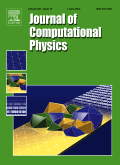
JOURNAL OF COMPUTATIONAL PHYSICS
Unveiling New Dimensions in Applied MathematicsJOURNAL OF COMPUTATIONAL PHYSICS, an esteemed publication from ACADEMIC PRESS INC ELSEVIER SCIENCE, serves as a premier platform in the field of computational physics and its interdisciplinary applications. Since its inception in 1966, the journal has provided invaluable insights and significant advancements in areas such as applied mathematics, numerical analysis, and modeling and simulation. With a robust impact factor and ranking in the top quartile across various related categories, including Q1 in Applied Mathematics and Physics and Astronomy, it is essential reading for researchers and professionals aiming to stay at the forefront of computational techniques and methodologies. Although the journal is not open access, it remains highly regarded with a reputation for rigorous peer review and high-quality publications. As the field continues to evolve, the JOURNAL OF COMPUTATIONAL PHYSICS highlights innovative research that not only advances theoretical constructs but also offers practical applications in scientific and engineering domains. For scholars and students, this journal embodies a critical resource for deepening their understanding and fostering dialogue within the scientific community.

JOURNAL OF COMPUTATIONAL MATHEMATICS
Connecting Practitioners and Theorists in Mathematical InnovationJOURNAL OF COMPUTATIONAL MATHEMATICS, published by GLOBAL SCIENCE PRESS, is a distinguished peer-reviewed academic journal dedicated to advancing the field of computational mathematics. With a focus on high-quality research that bridges theoretical and practical applications, this journal aims to disseminate innovative methodologies and robust algorithms that address complex mathematical problems. Operating without an open-access model, it maintains a reputable standing with a Q2 category classification in computational mathematics as of 2023, showcasing its influence and relevance within the academic community. The journal, which has been in publication since 1996, continues to evolve, providing a platform for researchers, practitioners, and students to engage with cutting-edge developments up to 2024. By contributing to the body of knowledge in computational mathematics, this journal plays a vital role in fostering collaboration and advancement in related disciplines.

Advances in Aerodynamics
Pioneering the Future of Aerodynamics.Advances in Aerodynamics is a premier scholarly journal published by SPRINGERNATURE, dedicated to the innovative fields of Aerospace Engineering, Civil and Structural Engineering, Mechanical Engineering, and various aspects of Modeling and Simulation. Since its inception in 2019, this open-access journal has rapidly gained recognition, achieving a commendable Q1 ranking in several engineering categories as of 2023. With its compelling focus on pioneering research and advancements in aerodynamics, it serves as an essential platform for original research articles, reviews, and technical notes that address both theoretical frameworks and real-world applications in sustainable engineering practices. With an impact factor fostering its prominence and visibility in the academic community, the journal provides accessible content that fosters knowledge dissemination among researchers, industry professionals, and students alike. Situated in Singapore and with a commitment to rigorously peer-reviewed research, Advances in Aerodynamics is positioned to play a pivotal role in shaping the future of aerodynamics and its applications across various engineering disciplines.
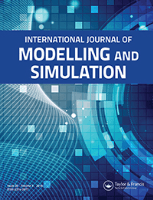
INTERNATIONAL JOURNAL OF MODELLING AND SIMULATION
Fostering Collaborative Knowledge in Modeling and SimulationINTERNATIONAL JOURNAL OF MODELLING AND SIMULATION, published by Taylor & Francis Inc, stands as a leading platform for the dissemination of high-quality research in the fields of modeling and simulation across various engineering disciplines. With an ISSN of 0228-6203 and an E-ISSN of 1925-7082, this esteemed journal has been actively contributing to the academic community since 1996. It enjoys a commendable reputation, ranked in Q2 across numerous categories including Electrical and Electronic Engineering, Engineering (miscellaneous), and Modeling and Simulation, reflecting its vital presence in the academic landscape. The impact factor has not been specified, but its impressive Scopus rankings demonstrate its significance, particularly in General Mathematics and various engineering fields, placing it within the 83rd percentile and above. With a broad scope that encompasses industrial applications and theoretical advancements, the journal aims to foster innovations that drive progress in technology and data analysis. While it is a traditional subscription-based journal, researchers and practitioners are highly encouraged to submit their findings to contribute to the ongoing dialogue in this dynamic field, making it a valuable resource for both established experts and aspiring scholars.
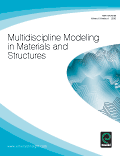
Multidiscipline Modeling in Materials and Structures
Advancing interdisciplinary dialogue in materials and structures.Multidiscipline Modeling in Materials and Structures, published by EMERALD GROUP PUBLISHING LTD, serves as a vital platform at the intersection of diverse fields including materials science, mechanical engineering, and modeling and simulation. Since its inception in 2005, this journal has gained recognition for its commitment to advancing knowledge and innovation within these disciplines, boasting a commendable Q3 categorization across multiple fields as of 2023. With a robust Scopus ranking that places it in the top 60th percentile for both mechanical engineering and mechanics of materials, it stands as a credible source for researchers and practitioners seeking to stay informed on the latest methodologies and applications. The journal emphasizes the importance of collaborative approaches to complex problems in materials and structural analysis, aiming to foster interdisciplinary dialogue and generate impactful research outcomes. Although currently not open access, the journal offers subscription options that ensure access to cutting-edge studies and critical reviews relevant to professionals and students alike. Engaging with this journal not only enriches one’s understanding of the field but also contributes to the ongoing discourse and development of innovative solutions in materials and structural modeling.
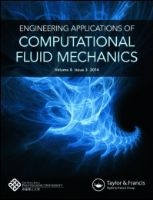
Engineering Applications of Computational Fluid Mechanics
Enhancing Engineering Solutions with Computational InsightsEngineering Applications of Computational Fluid Mechanics is an esteemed journal published by Taylor & Francis Ltd that serves as a vital resource for researchers, professionals, and students in the field of fluid mechanics and its computational applications. With an ISSN of 1994-2060 and an E-ISSN of 1997-003X, this journal has established its reputation through its rigorous peer-review process and commitment to Open Access since 2015, facilitating widespread dissemination of cutting-edge research. Based in the United Kingdom, the journal is indexed in leading databases and has achieved a significant impact in its categories, ranking in the top quartile (Q1) for both Computer Science (miscellaneous) and Modeling and Simulation as of 2023. Notably, its Scopus rankings place it in the top 4% of Mathematics/modeling and simulation, highlighting its importance in advancing knowledge and innovation within the discipline. The journal invites contributions that explore both theoretical and practical aspects of computational fluid dynamics, fostering collaboration and intellectual growth within the community.
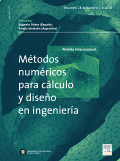
Revista Internacional de Metodos Numericos para Calculo y Diseno en Ingenieria
Pioneering Research for Tomorrow's Engineering ChallengesRevista Internacional de Metodos Numericos para Calculo y Diseno en Ingenieria is a prominent academic journal dedicated to the dissemination of innovative research and methodologies in the fields of applied mathematics and engineering. Published by SCIPEDIA S L in Spain, this journal has been an essential resource for researchers since its inception in 1987, transitioning to an Open Access model in 2016 to enhance accessibility and foster collaboration among professionals and academics globally. Currently indexed in Scopus, it holds a Q4 category designation in both applied mathematics and miscellaneous engineering fields for 2023, reflecting its focus on advancing numerical methods to solve engineering problems. Despite ranking at the lower percentile, it serves as a vital platform for emerging scholars and practitioners aiming to contribute to cutting-edge developments in numerical techniques and engineering design. The journal's commitment to providing a forum for new ideas makes it an invaluable asset for students, researchers, and industry professionals seeking to stay abreast of advancements in the discipline.
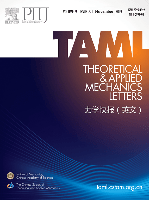
Theoretical and Applied Mechanics Letters
Advancing Engineering Knowledge Through Theory and PracticeTheoretical and Applied Mechanics Letters, published by ELSEVIER, stands as a premier journal in the field of engineering and applied mechanics, recognized for its rigorous peer-reviewed articles that advance theoretical and practical frameworks. With an impressive open access policy established in 2015, the journal enhances global accessibility to cutting-edge research across a range of disciplines including Aerospace, Civil, Mechanical, and Biomedical Engineering, along with Computational Mechanics and Ocean Engineering. The journal boasts an enviable position in the academic landscape, achieving a Q1 rank in several categories as of 2023, while being cited among the top percentiles in Scopus Ranks, specifically ranking #25 in Aerospace Engineering and #15 in Computational Mechanics. The journal aims to foster innovation by providing a platform for scholars and professionals to disseminate their findings, thereby bridging the gap between theoretical research and practical applications. By promoting a diverse range of topics and methodologies, Theoretical and Applied Mechanics Letters not only contributes to the advancement of engineering disciplines but also supports the global academic community in exploring sustainable and impactful engineering solutions.
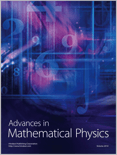
Advances in Mathematical Physics
Catalyzing Ideas in Applied Mathematics and PhysicsAdvances in Mathematical Physics is a premier open-access journal published by HINDAWI LTD, dedicated to the dissemination of research in the fields of applied mathematics and physics. With its ISSN 1687-9120 and E-ISSN 1687-9139, this journal has been a vital platform for innovative studies since its inception in 2009, fostering a collaborative environment for researchers and professionals alike. The journal features a wide range of topics, including but not limited to mathematical models, computational physics, and interdisciplinary applications, thus attracting a diverse readership. Ranked in the Q3 quartile for both Applied Mathematics and Physics and Astronomy, it serves as a significant resource for academics looking to explore cutting-edge developments and theoretical advancements. With an emphasis on open accessibility, Advances in Mathematical Physics ensures that research findings are readily available to the global academic community, leveling the playing field for emerging scholars and seasoned researchers. By consistently showcasing high-quality manuscripts, the journal contributes substantially to the fields of mathematics and physics, encouraging scholarly dialogue and advancing knowledge across a myriad of applications.
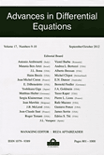
Advances in Differential Equations
Connecting Theory with Practice in Differential EquationsAdvances in Differential Equations is a premier journal that serves as a vital resource for researchers, professionals, and students in the fields of mathematics, particularly focusing on the theory and application of differential equations. Published by KHAYYAM PUBL CO INC, this journal has established itself as a key player in the academic landscape since its inception in 1996, with continuous contributions that bridge theoretical math and practical applications. With an impressive impact factor reflected in its category quartiles—ranking Q1 in Analysis and Q2 in Applied Mathematics for 2023—this journal is recognized for the quality and rigor of its published works. The journal's scope encompasses a wide array of topics, encouraging authors to submit innovative research that can advance the understanding of differential equations in various contexts. Although it does not operate as an Open Access journal, the subscription model ensures that readers receive high-quality, peer-reviewed research that contributes significantly to ongoing developments in mathematics. Based in the United States, Advances in Differential Equations continues to publish articles until 2024 and remains a crucial outlet for interdisciplinary collaboration and discourse in the mathematical sciences.